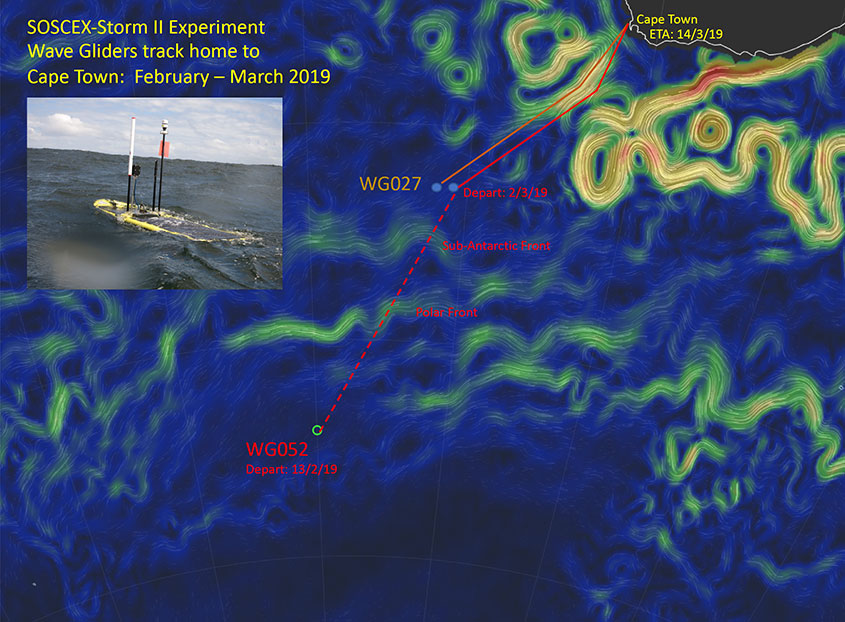The Long Swim Home to Cape Town
Liquid Robotics — June 3, 2019
When your Wave Gliders complete a mission, you have a choice: takeout (send a boat to pick them up) or delivery (have the Wave Gliders swim home to you).
After their most recent mission, CSIR researchers at the Southern Ocean Carbon & Climate Observatory (SOCCO) chose the latter, and a pair of Wave Gliders swam 1500km and 2800km home to Cape Town, respectively.
The Wave Gliders first spent two months on mission in the Sub-Antarctic Zone (43°S 8°E) and Polar Upwelling Zone (54°S O°E), collecting pCO2, pH, temperature and salinity observations in the Southern Ocean. The SOCCO team reports that the Wave Gliders “behaved flawlessly under the most dire conditions that the Southern Ocean could throw at them, which included weekly storms of 80-140km/h winds, waves of 10+m, snow storms and sea temperatures of -1 to 2°C.” Each Wave Glider was paired with a buoyancy glider in order to simultaneously observe the air-sea fluxes of CO2 and the ocean physics dynamics that influence them in the upper 1000m of the ocean.
The decision to have the Wave Gliders swim home opened up the opportunity to conduct a second experiment. The Wave Glider that was 2800km from home (WG052) first swam to meet up with the Wave Glider that was 1500km from home (WG027). From there, the two Wave Gliders swam in parallel about 50 – 100km apart to test some ideas about pCO2 length scales.

Map showing the tracks and timeline the Wave Gliders took for the mission.
By choosing to have Wave Gliders swim home, the SOCCO team also avoided vehicle recovery in rough conditions and reduced its dependency on expensive ships, both of which can help make long-term ocean observations safer and more cost-effective.
The Wave Glider, ready for recovery off Granger Bay on a cold misty morning in Cape Town.
Thanks to Dr. Pedro M. Scheel Monteiro and the SOCCO and SA-RobOTIC team for sharing the story of this mission! You can read more about it on the South African National Antarctic Programme (SANAP) website: part 1, part 2, part 3.
